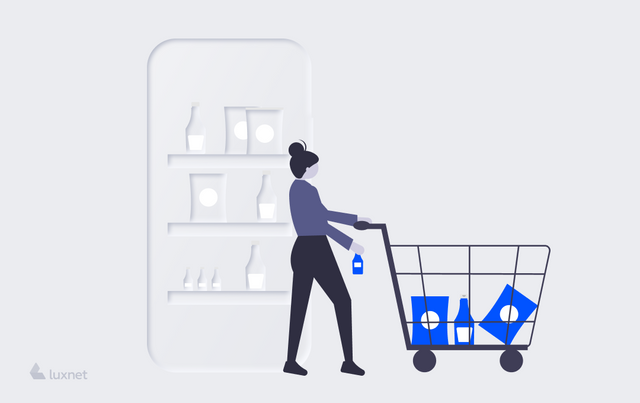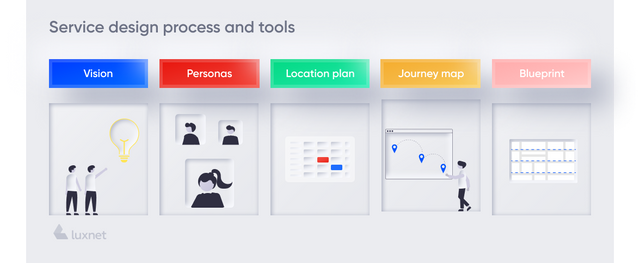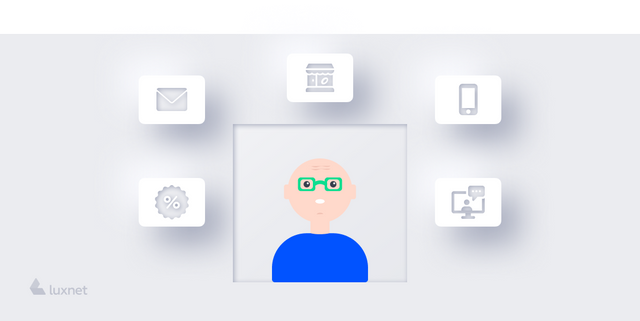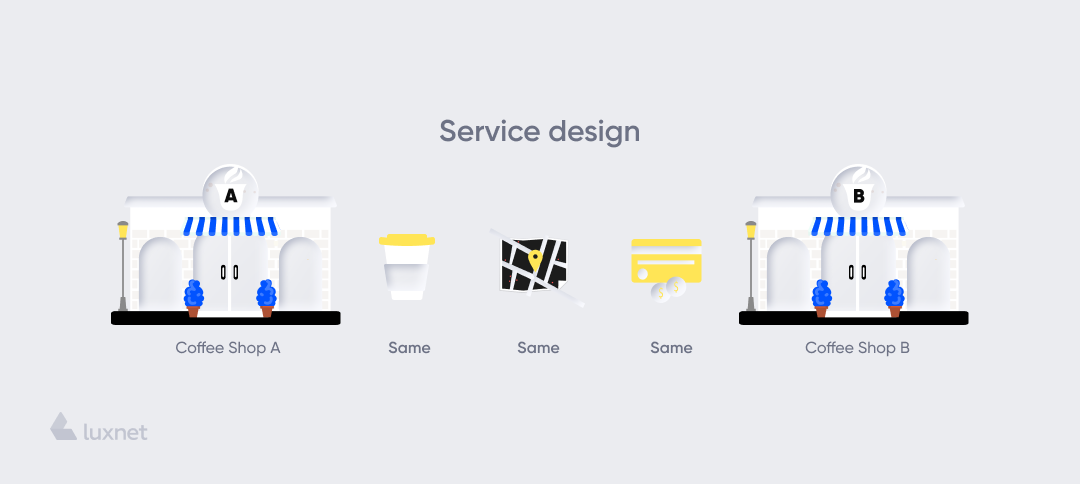Let's start from the beginning, the definition. Service design or design thinking is a process of modeling a service to create interaction between the provider and the users which takes into consideration all the relationships between them and balances the needs of both parties. In simple words, service design is the ability to balance between profit and customer convenience.
What is service design in simple words?
Just imagine: you have a chain of grocery stores throughout the city. Service design is a strategy that pushes the user to go to the same store every time, even if it is located far away from their home or work. So, it is a process where UX designers study how the customer feels during the life cycle of interaction with the company. Actually, this is a kind of equilibrium strategy: the better the customers feel when they receive services, the more money your business will earn.

There are five basic principles of service design thinking:
- user orientation: understanding it through business research and analysis;
- co-creativity: integration of stakeholders in the design process;
- provability: visualization of overall customer experience;
- integrity: consideration of all points of interaction between the customers and the company.
Let's go back to the example. Imagine one of the grocery stores in the chain. This grocery store is not just a place where goods are sold. It is also managers, employees, suppliers, shelving, quality products, interior design and many other factors that shape the image of this place for the customer.
Design thinking is the process of adjusting all the factors above to make the user feel comfortable and return to the store again and again.
Step-by-step service design
Step 1: Organize your vision and goals
This step is the beginning of the product design process. Here the company must decide how each service fits into the company's strategy. And what if it does not fit? If it is too far from the main goals of the company and will bring neither profit nor satisfaction to the user? Will the customer go to the grocery store to buy a mop? It is unlikely.
But he/she will definitely visit the shop to buy some fresh berries or chocolate. And he/she may also want to buy a pack of napkins to set the table: it's more relevant than a mop among the shelves with vegetables.
Step 2: Conduct a brainstorming
This step is about building a creative team that will work upon the above goals & the vision. In this case, brainstorming is the best idea: everyone can generate suggestions based on their own experience. The seller will know how to improve the service, the communications manager will know how to attract the users through advertising, and the managing director / CEO will know how to optimize all this work.
If you use brainstorming, you can achieve remarkable results.
Step 3: Analyze the market
It is obvious that before launching or improving service, it is necessary to conduct a market analysis to make the service useful and new. To do this, you need to analyze the size, trends and drivers of the market; moreover, you need to understand how a potential service can help solve the problems that the user still has.
Step 4: Identify any obstacles, limitations and restrictions
Let all team members critically evaluate their own and others' ideas, identify the weaknesses and then improve them. Based on these facts, set the barriers and restrictions that are better to be avoided. By doing so, the service does not require an enormous amount of effort in support and it is not useless for the user.
Step 5: Create a person profile
You have put a lot of effort and energy into the previous four steps. The most important thing now is to form your target audience. Who will use the service? For example, there are nine stairs in front of your store. You have decided to install a ramp to make it easier for customers to walk up.
Who is the target audience for this service?
People with disabilities and mothers who push the strollers or baby carriages. Make a portrait of the user to take into account all your needs. For example, when the ramp is too inclined, it will not help anyone. It will be unnecessary and useless. If you make it flatter, people will use it.
Step 6: Create a prototype and test it
This step is about saving your money. In fact, before launching a service on the market or updating a product, you need to test these things to know what works and what doesn't work. One more reason is to make the process even better than it was in the early stages of development. You can test the service on your employees, or even involve several real users.
Step 7: Evaluate your users' experience
Conduct a survey on how the users feel when they receive services. You can hand out questionnaires, you can send questions via email, you can interact through social networks. Ask your users if they like the features of the service; if the service is simple, useful, or valuable enough for them to pay for it.
Step 8: Improve the service and grow
This is the final stage of development. But this is by no means the end of improving the service. Remember: feedback is the best tool for optimizing your business. If people suggest ways to improve or ask for new tools, meet their needs.

Elements of service design
Design thinking includes visual aids, functions, their distribution and commands, copywriting, information presentation architecture and more.
However, there are three main components of service design:
- People. Those who develop the service and those who use it. That is the company's team and users.
- Details. This element includes the range of tools needed to successfully implement the service. It embraces web pages, blogs, social networks, and digital files - images, videos, audios. As for physical space, it includes banners, shop windows, conference rooms, etc.
- Processes. These are all work processes and rituals that are associated with the development of the service. This includes support service, surveys of employees and users, cash withdrawals from ATMs, etc.
Service design tools
In order to implement quality service design, it is important to use certain tools. In a technical sense, these aspects improve service performance.
The main tools of service design:
- Research. Analysis of the market and available services.
- Stakeholder formation. From whom and for whom is this service? Who should work to improve it?
- UX / UI design. Creation of the platform that will be intuitive and easy for the user.
- Prototyping. Creation of the product prototype before its implementation
- Testing. Product testing in real conditions before launch.
- Feedback. The tool to improve the service after its launch.
Users as a target
All these processes are necessary for your business for the main purpose: to turn a potential user into a regular customer. This is the same balance that we mentioned at the beginning of the article: a satisfied user will benefit if he/she orders the quality service he/she needs. At the same time, he/she is ready to pay money for the service.
So, your company will make a profit. Thus, it will be able to develop, come up with new services which up to now have been "gaps" in the market and create user-centred application/project.

Service plan
Service plan is a diagram that shows a simulation of a service to create interaction between a provider and users. It takes into account all the relationships between them and balances the needs of both parties. This is the visualization of service design and is basically service design blueprint.
The main elements of a service plan are:
- The customer’s actions that they perform/do to achieve the goal.
- Frontal actions. These are the actions performed by the user when interacting with your business: buying online, buying from a seller, consulting by phone, etc.
- Backstage actions. The actions performed by the team working upon the product.
- Processes. The internal steps and interactions that support employees in/while providing the service.
If it is necessary, you can include and analyze such indicators as time, company policy and emotions expressed by the person.
